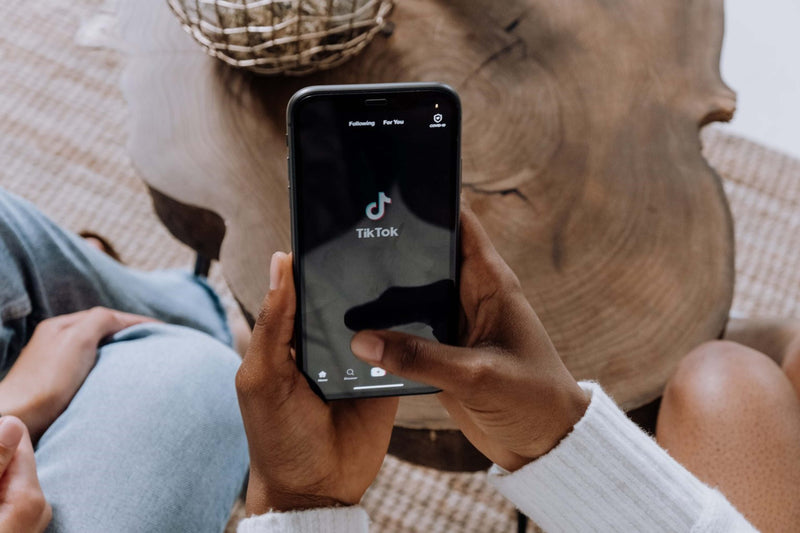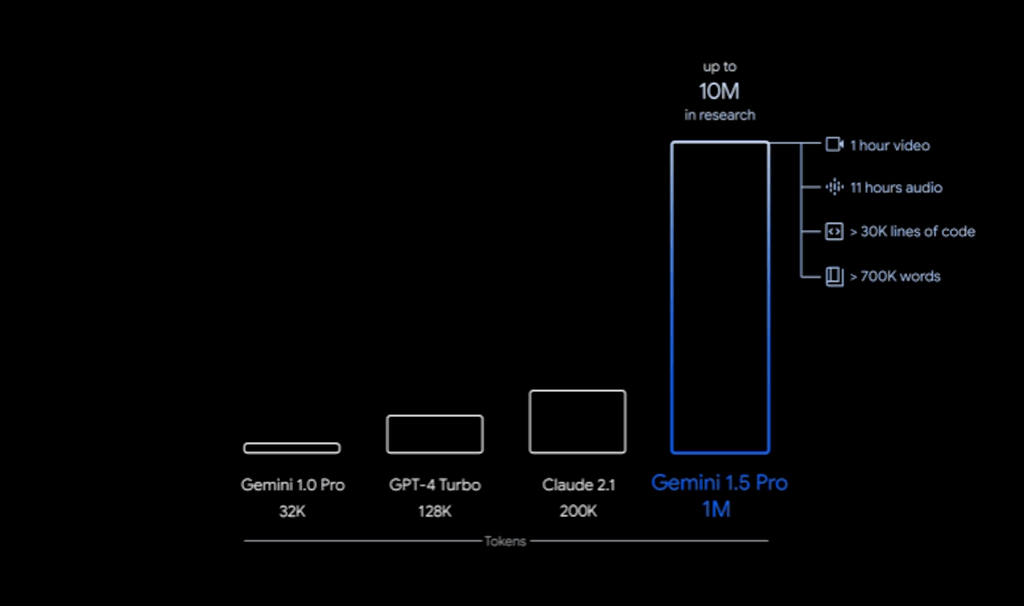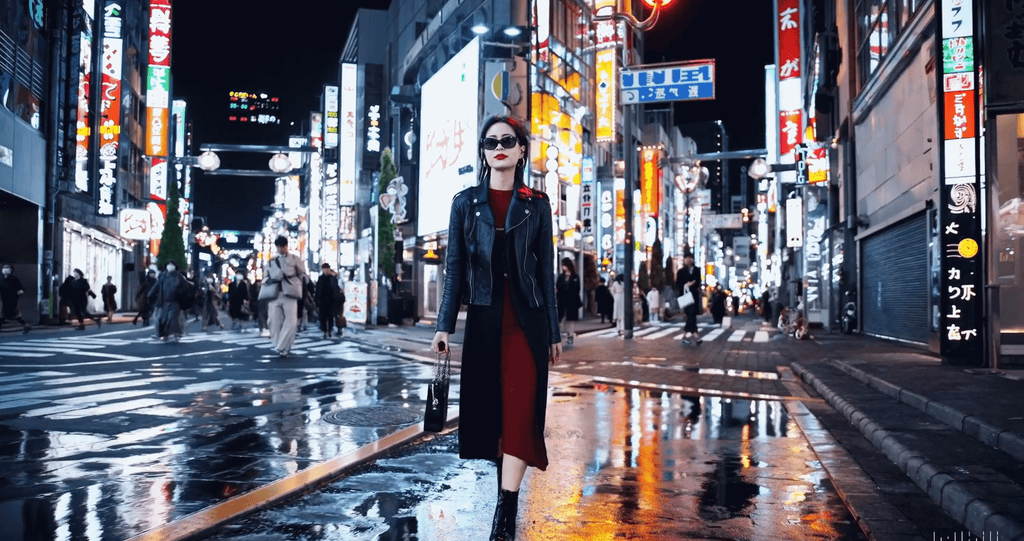Why video search is the new go-to for brands and consumers
- Olly Green
- Read time: 11 minutes

The latest AI innovations are a further forewarning of the direction search appears to be heading.
Google and OpenAI have both announced fresh installments in a snowballing series of AI upgrades over recent years, as the battle for supremacy in the world of search boils hotter than ever.
Google’s progress on long-context understanding and reasoning was revealed last month as the global search engine showcased Gemini 1.5 Pro, the newest version of its ever evolving and expanding AI tool.
Gen Z favours a video search engine
TikTok search engine rivalling Google
Google Gemini and Sora: What do they do?
Are AI generated marketing videos the future?

The introduction of a “breakthrough experimental feature in long-context understanding” has captured the imagination, bringing to the table a groundbreaking capability for Gemini to understand and interpret video.
The Gemini 1.5 Pro unveil came just days apart from the introduction of Sora, tech startup OpenAI’s staggering AI model that can generate realistic video from text instructions – which appears far more effective than any other competitor to date.
These two incredible innovations are set to have a profound impact on consumers, creators, and marketers, and are a fascinating development given the growing prominence of video in today’s internet landscape.
Gen Z favours a video search engine
Before delving into the potential impact of the latest creations from Google and OpenAI, let’s unpack the way search behaviour has been trending in recent years.
The emergence and increasing influence of TikTok underlines how desirable video content is becoming for users. TikTok videos now appear in over 26% of search queries on Google, according to research by Her Campus Media. But so much is the craving for video content, younger users are now turning to TikTok for their searches – a staggering 74% of Gen Z users prefer TikTok's search capabilities over Google's.

YouTube is another popular destination for Gen Z - 60% have used the video platform to find more content about a show or movie they just watched, according to the YouTube Culture & Trends Report 2022. The preference for video isn’t restricted to Gen Z, with 14.9% of Millennials watching 10-20 hours of videos per week, according to research from Statista.
This appetite for video shows no sign of easing, and is equally pertinent in relation to users’ interests in brands and products, as evidenced by Wyzowl’s Video Marketing Statistics 2024 report:
- 89% of users want to see more videos from the brands they follow
- An all-time high of 91% of businesses used video as an online marketing tool in 2023
- 82% of people say watching a video has convinced them to buy a product or service
With TikTok’s growth showing no signs of slowing, satiating users’ increasing enthusiasm for video, the pressure will be on marketers to produce content that aligns with this mentality.
Video content is king
So, what is it that defines and explains the video-centric attitudes of younger search users. What is it they’re craving that cannot be delivered by other forms of content?
Focusing specifically on why consumers are drawn to TikTok as a search engine, an Adobe Express report explains some of the reasoning and psychology behind this trend. 44% of users surveyed said the short video format is more informative and digestible – the primary reason TikTok is favoured. 34% also said they enjoyed the storytelling aspect of TikTok videos. The personalisation TikTok is widely renowned for was cited too, along with the feeling that results were ‘more current’ than on typical search engines.
What’s more intriguing is the type of content users were searching for on TikTok. Video tutorials (62%) were by far the most popular content, followed by product or services reviews (39%).
Where Google and other search engines seem to hold an advantage is within their authoritativeness and trustworthiness – two pillars of the E-E-A-T (Experience, Expertise, Authoritativeness and Trustworthiness) concept that is the backbone of Google’s search rankings. Only 12% of users believe TikTok provides clear and accurate information faster than other search engines.
TikTok search engine rivalling Google
The competition between platforms to harness this video-centric audience will stimulate further innovation across search.
Reiterating the research cited earlier, Google Senior Vice President Prabhakar Raghavan suggested at the Fortune Brainstorm Tech conference that “almost 40% of young people when they're looking for a place for lunch, they don't go to Google Maps or Search, they go to TikTok or Instagram."

And with TikTok’s advertising revenue forecast by Business Insider to overtake YouTube by 2024, the future is appearing bright for the Chinese-developed service – but you can count on Google to fight back on all fronts.
The response from the search engine giant has been to adapt its search results to feature more images and video – including from TikTok - as well as inspirational ‘explore’ features and personalised results. The question is whether this will be enough to prise Gen Z away from the clutches of TikTok, which is implementing changes of its own.
In January, TikTok began trialling 30-minute-long video uploads for some users in the beta version of its app. The maximum duration of videos on the platform has been increasing incrementally since 2018, when the limit was just 15 seconds. There has been an increase every year since – up to 15 minutes in 2023 – and it looks set to shoot up again in 2024. The duration increase is an ominous sign for YouTube, which currently differs from TikTok in that it hosts much longer videos.
If Gen Z are using TikTok as a search engine and as a source for longer, more in-depth videos that used to be synonymous with YouTube, where does that leave Google?
Google Gemini and Sora: What do they do?
So, where does the launch of Google Gemini 1.5 Pro and OpenAI’s Sora come into play? First, we need to understand exactly what these tools are capable of.
What is Google Gemini 1.5?
In Gemini 1.5 Pro’s case, there has been a vast increase in its ‘context window’ - made up of tokens that are the building blocks of processing information. While the capacity for Gemini 1.0 was 32,000, 1.5 Pro can run up to 1 million tokens and has even been tested up to 10 million. The result is the capability for 1.5 Pro to process masses of information at once – from 11 hours of audio to over 700,000 words.

But for the purposes of this article, what we’re most interested in is the tool’s ability to process up to one hour of video. ‘Process’ is perhaps disingenuous – it does far more than that. The model can accurately analyse plot points and events with the video, and even reason about minor details that might be easily missed. The demo provided by Google even showed 1.5 Pro identifying a scene from a silent 44-minute movie when it was simply provided with a basic line drawing.
What is OpenAI Sora?
On the flip side of the coin is Sora, which is in the business of creating video rather than interpreting it – and its demo was equally impressive. OpenAI’s text-to-video model can generate incredibly high-quality videos up to a minute long, adhering to a user’s specific prompt. It was showcased generating complex scenes featuring multiple characters, specific types of motion and accurate backgrounds.

Are AI generated marketing videos the future?
There is limited access to Gemini 1.5 Pro and Sora currently as testing continues, but they are primed to have a profound impact on the search landscape when they eventually launch to the public.
We have already discussed the increasing appetite for video among the younger generation of searchers, and the capabilities of these two tools are only poised to exacerbate that trend.
For 1.5 Pro and Google, it is the prospect of transforming the way users search for video. If Gemini can eventually process the masses of video across the internet and throw up the most relevant moment from the most relevant video, that could be a game-changing addition to its search engine.
Of course, relevant moments from YouTube and TikTok videos are already presented in search results, but this is largely based on titles, descriptions and transcripts – rather than the search engine’s inherent understanding of what the user is looking for. If 1.5 Pro can allow Google and YouTube itself to provide even more relevant videos from highly specific and nuanced queries – as seems more than possible given the demo – it could be a major boost in its battle for supremacy across search, particularly if it's coupled with personalisation efforts.

Returning to a statistic mentioned earlier, 62% of TikTok users preferred video tutorial content. Imagine the possibilities if users could find the exact moment they are seeking. For example, a search query of ‘where does this screw go?’, accompanied by an image or even a drawing, could produce the specific moment the screw is used within a brand’s tutorial video on TikTok. If such a prospect becomes reality, marketers will be implored to ensure such content is available.
Given the potential impact of 1.5 Pro on video search, Sora is set be a transformative introduction for creators and marketers. The onus will be on brands to deliver useful and informative video content that can take advantage of this new search capability. Previously, creating such content would be time-consuming and costly – particularly longer videos, which TikTok is leaning towards. It won’t be with Sora. It's not unreasonable to suggest that the tool could be leveraged to produce fine-tuned promotional, educational, or informative video content - all from a simple text prompt.
The question remains where this Sora-created video will find its home. Will it further stoke the fires of the TikTok machine, or hand Google a much-needed boost? What could be crucial is how the two tools interact – will 1.5 Pro be able to interpret AI-created video more, or less, effectively than ‘real’ footage? The prospect of Google becoming an AI ecosystem, where an AI assistant deciphers and processes AI-created video, is both frightening and exciting. It should also be considered that Google has now seemingly started a war against mass-generated AI content - will the same be true for video?
Either way, the latest evidence and AI innovations suggest that video is set to take further control of search results in the near future.
References
- https://searchengineland.com/gen-z-tiktok-google-search-survey-431345
- https://www.youtube.com/trends/report/2022/
- https://www.statista.com/statistics/611750/millennial-time-spent-with-online-video/
- https://www.wyzowl.com/video-marketing-statistics/
- https://www.adobe.com/express/learn/blog/using-tiktok-as-a-search-engine
- https://techcrunch.com/2022/07/12/google-exec-suggests-instagram-and-tiktok-are-eating-into-googles-core-products-search-and-maps/
- https://searchengineland.com/tiktok-pilots-30-minute-video-uploads-436864